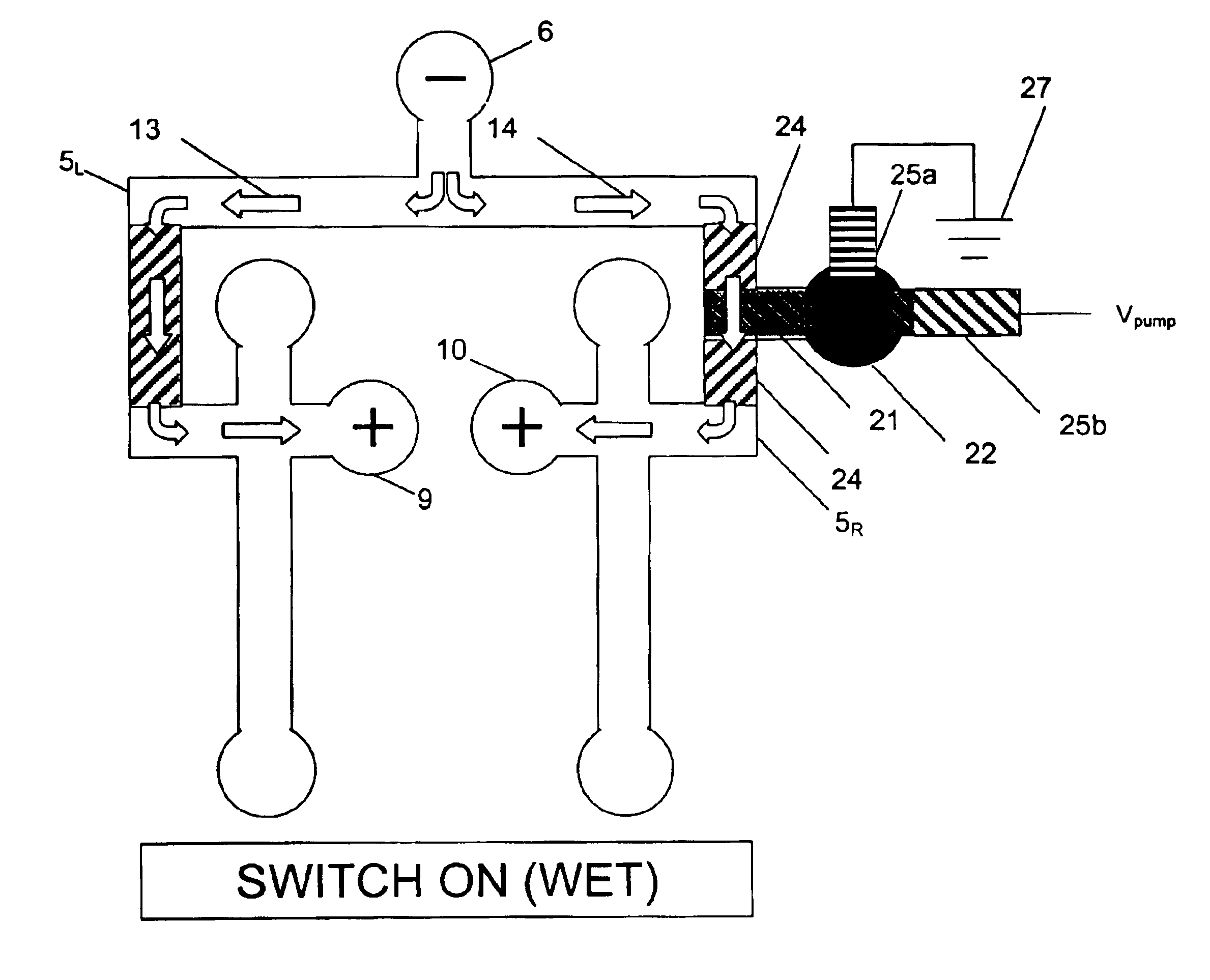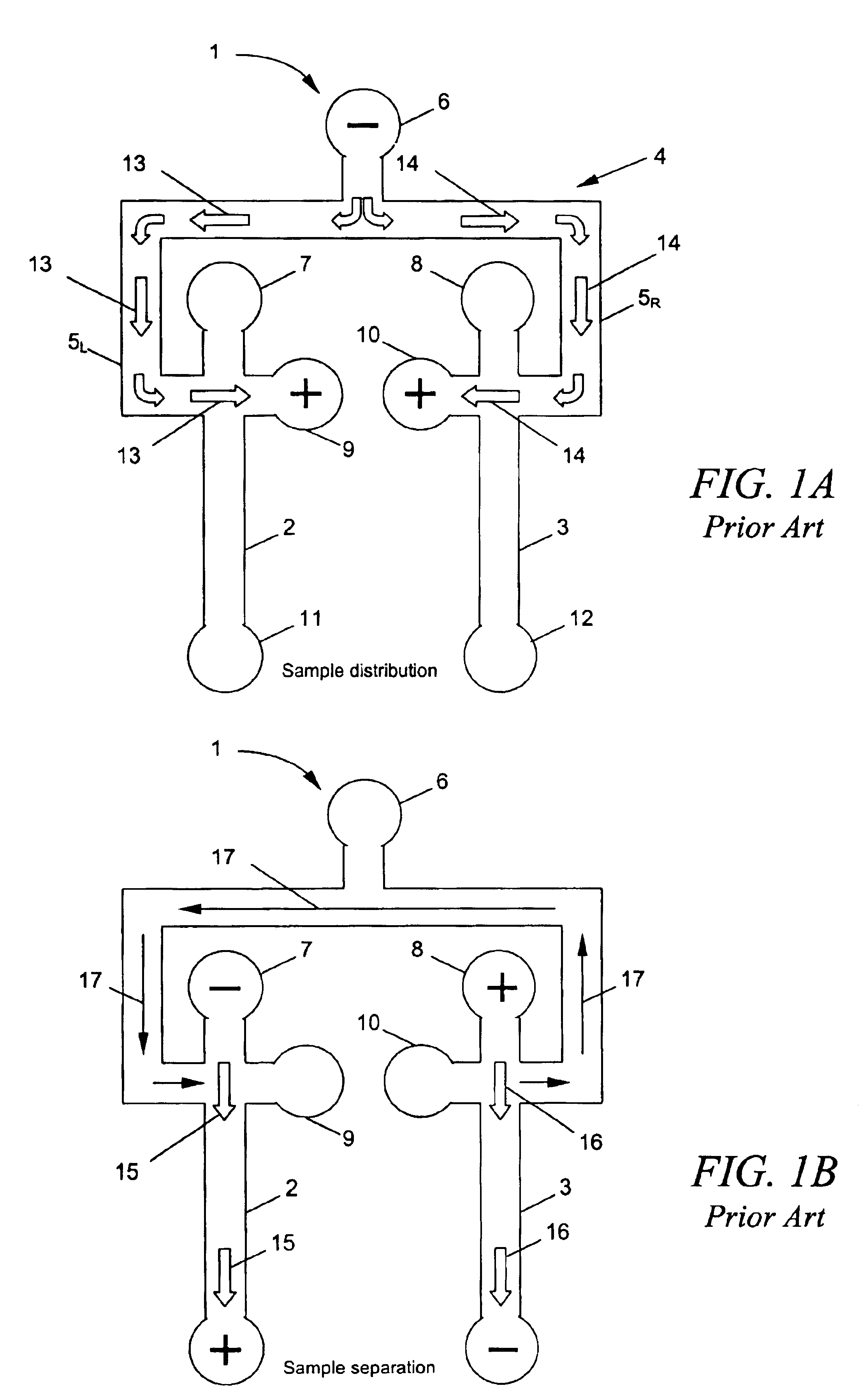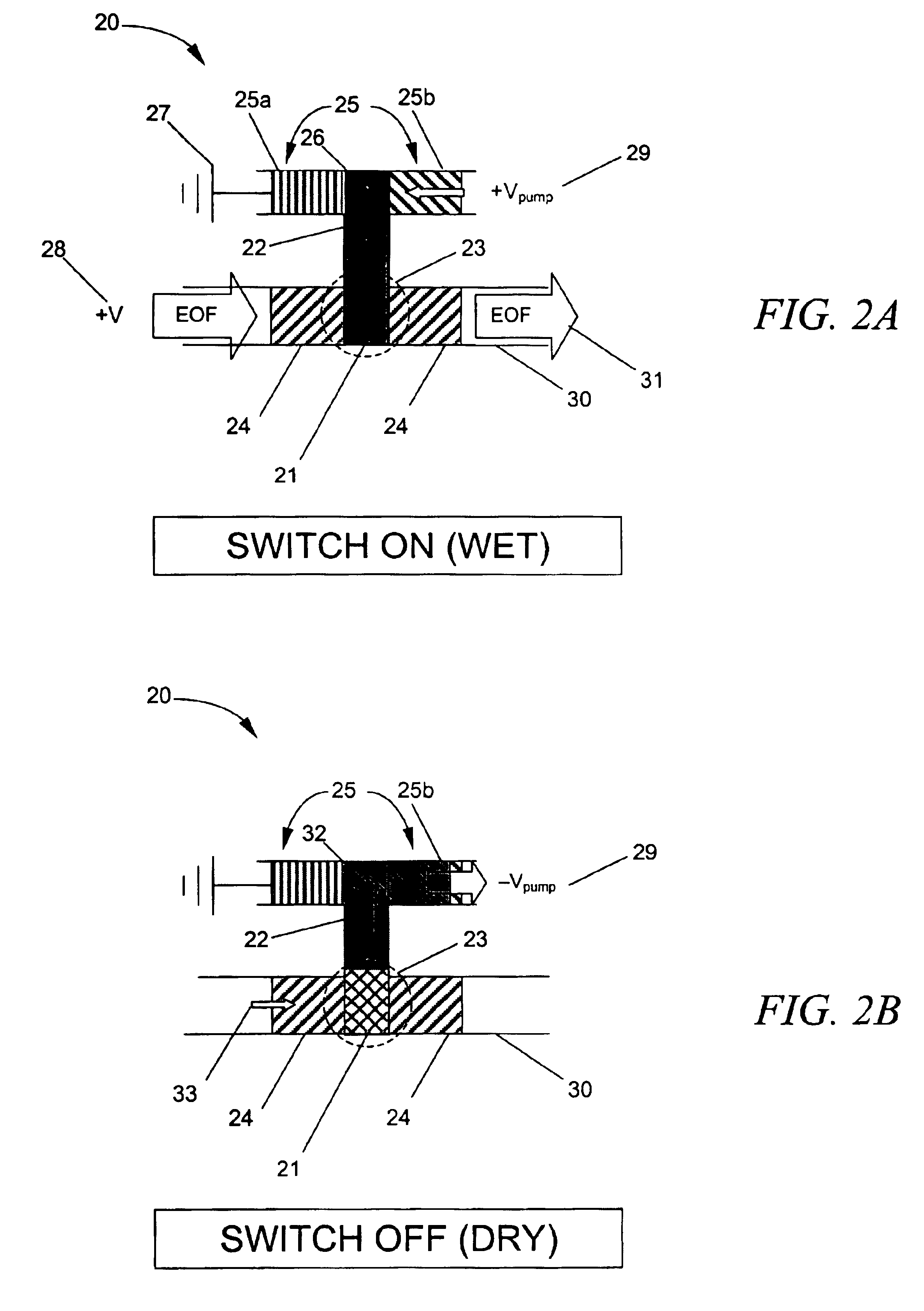Conductance valve and pressure-to-conductance transducer method and apparatus
a technology of pressure-to-conductance transducer and valve body, which is applied in the direction of fluid pressure measurement, liquid/fluent solid measurement, peptide measurement, etc., can solve the problem of limiting the range of applications for which this approach is suitabl
- Summary
- Abstract
- Description
- Claims
- Application Information
AI Technical Summary
Benefits of technology
Problems solved by technology
Method used
Image
Examples
example and experimental
VALIDATION
Before describing specific experimental results, it is useful to describe some of the considerations concerning the use of such a device in an electrokinetic microfluidic network, and the materials from which such a device can be made. Although the device could be demonstrated with a large variety of different media or materials for providing a matrix of hydrophobic pores, the device of the present invention was constructed using packed beads of PTFE resin (DuPont TEFLON®) as the porous matrix. (Also useful are acetal resins, such as DuPont DELRIN®, and polytrifluorochloroethylene resins, such as 3M Kel-F®.) PTFE is chosen, however, because it has the following properties that are generally desirable for a device of this type, i.e., a conductivity switch, so that it may be interposed in a microfluidic network without otherwise disrupting its performance:
PTFE provides a matrix through which molecules can be pumped (hydraulically or electrokinetically) without excessive rete...
PUM
| Property | Measurement | Unit |
|---|---|---|
| hydrophobic | aaaaa | aaaaa |
| differential hydraulic pressure | aaaaa | aaaaa |
| electrical potential | aaaaa | aaaaa |
Abstract
Description
Claims
Application Information
 Login to View More
Login to View More - R&D
- Intellectual Property
- Life Sciences
- Materials
- Tech Scout
- Unparalleled Data Quality
- Higher Quality Content
- 60% Fewer Hallucinations
Browse by: Latest US Patents, China's latest patents, Technical Efficacy Thesaurus, Application Domain, Technology Topic, Popular Technical Reports.
© 2025 PatSnap. All rights reserved.Legal|Privacy policy|Modern Slavery Act Transparency Statement|Sitemap|About US| Contact US: help@patsnap.com



